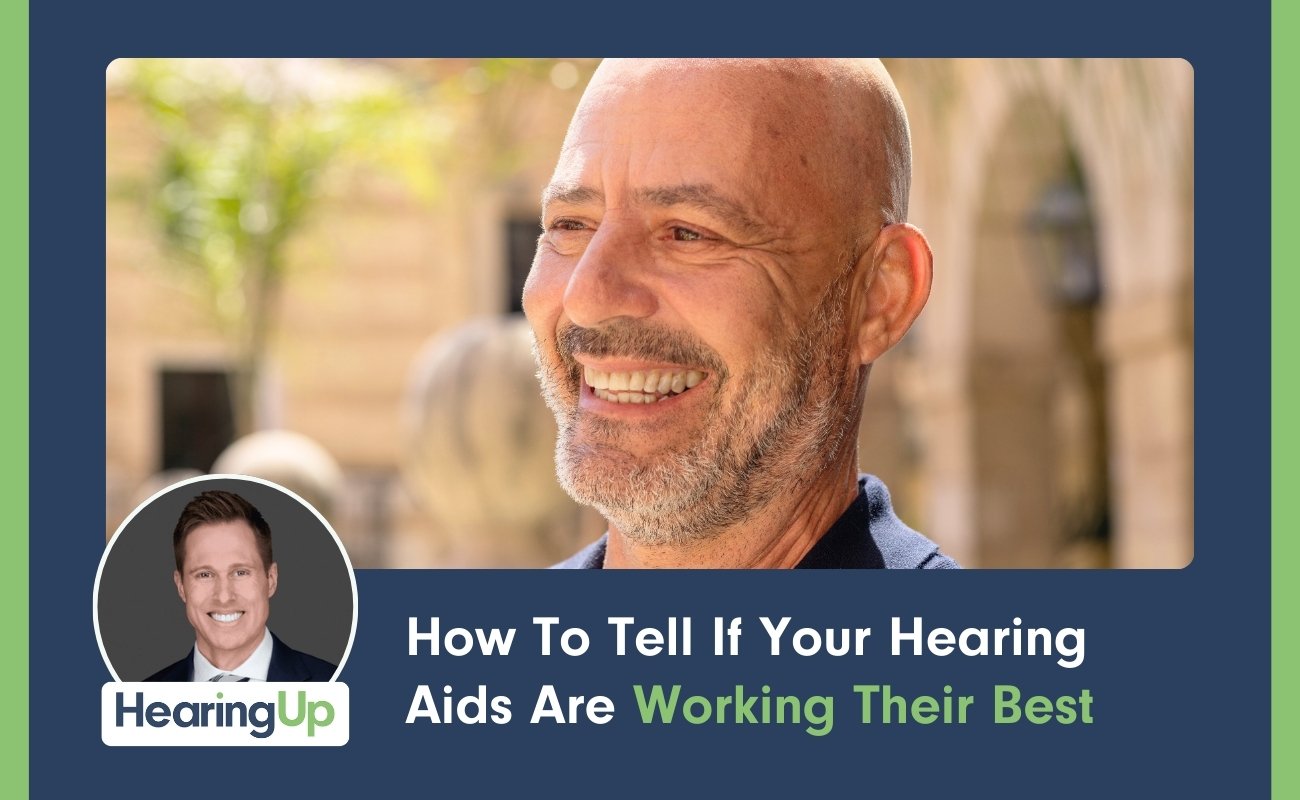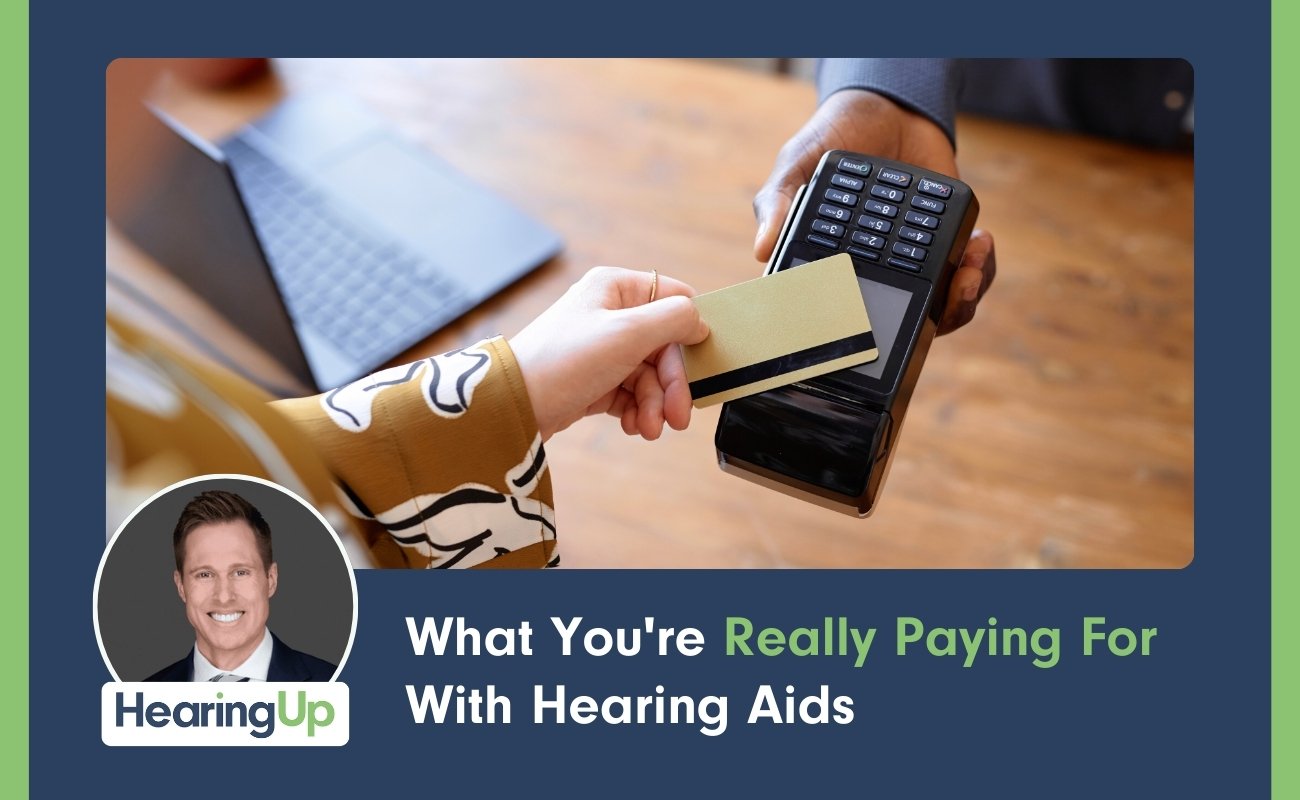Hi guys. Cliff Olson, Dr of Audiology and founder of Applied Hearing Solutions in Phoenix, Arizona, and in this video I'm gonna teach you everything you need to know about Eustachian Tube Dysfunction and how to fix it. Coming up
The eustachian tube, just like the name is a hollow tube that connects your middle ear space with your throat. The primary responsibility of the eustachian tube is to equalize your middle ear air pressure, but it also helps to remove fluid secretions as well as epithelial tissue from your middle ear space. The eustachian tube was named after the Italian anatomist Bartolomeo Eustachio, who lived from 1510 to 1574. In adults, the eustachian tube is approximately 36 millimeters in length and is on a 45 degree angle from your ear down to your throat. In children, the eustachian tube is much shorter at approximately 18 millimeters in length with an angle of only around 10 degrees. In fact, this is the reason why children often have more issues with fluid buildup in their middle airspace because it is harder for this fluid to drain out through the eustachian tube.
At this shallow or angle. A properly functioning eustachian tube will open and close regularly when you swallow or yawn, allowing some air to get into your middle airspace or some air or fluid to escape your middle airspace. Maintaining neutral middle ear air pressure you station tube dysfunction, otherwise known as "ETD", is when this tube does not open and or close properly causing a variety of different issues that negatively impact your ears. The symptoms of eustachian tube dysfunction can include hearing loss, tinnitus, ear pain, ear fullness, dizziness or vertigo, clicking or popping sounds, or the auditory and physical perception of your own breathing. Technically speaking, there are three different types of Eustachian Tube Dysfunction, but before I explain what these three different types are, if you could do me a huge favor and click the like button, really helps out my channel because it gets these videos in front of a bigger audience and why you're at it.
If you have not yet hit that subscribe button with notification bell, go ahead and do that as well, because that ensures that you never miss one of my newly released videos and I release multiple new videos every single week. That being said, I really appreciate it. Now let's take a look at the first type of eustachian tube dysfunction called ulus et d ulus. Eustachian tube dysfunction, otherwise known as a patent eustachian tube occurs when your e tube does not close. This can be caused by a variety of things, which include excessive gum chewing, overuse of nasal decongestants, rapid weight loss, hormone changes, radiation therapy to the head or neck area, or even dehydration. I've experienced this myself racing in a triathlon in the middle of the hot summer when I got so dehydrated that my eustachian tube remained open, so every single time I took a breath, I could feel my eardrum moving and I could even hear it moving.
Sometimes a patent eustachian tube can be remedied by drinking more water, avoiding caffeine or nasal decongestants, or actually taking a medicated nasal spray or undergoing surgery. While patless eustachian tube dysfunction typically does not hurt, it is extremely annoying. However, the second type of utian tube dysfunction called obstructive ETD can be painful. This type of utian tube dysfunction occurs when your eustachian tube cannot open properly and can be caused by things like allergies, cold symptoms, inflammation, or even an ear infection. This can result in fluid buildup inside of the middle ear space as well as a significant negative or positive middle ear air pressure. When this happens, it often puts pressure on the eardrum, which can result in pain. In extreme cases, this can even rupture your eardrum. Sometimes using natural pressure equalization techniques can force the eustachian tube open for just long enough to equalize the middle ear air pressure, which can often alleviate the pain.
Now, if you would like to see me demonstrate some of these natural techniques, I will link this video down in the description. Some other forms of treatment for obstructive eustachian tube dysfunction can include antihistamines, anti-inflammatories, as well as antibiotics. In some cases of chronic obstructive eustachian tube dysfunction, none of these natural techniques or medications will work, and you may have to get pressure equalization tubes instead. Pressure equalization tubes, also known as PE tubes, are tubes that are surgically inserted into your eardrum to equalize pressure and drain any fluid from your middle ear space. It is much more common for pressure equalization tubes to be used on children, but they are an effective treatment option for adults with chronic obstructive uust tube dysfunction as well. Once this pressure equalization tube is properly installed inside of your eardrum, it will naturally work its way out over the course of time.
Usually after this eustachian tube dysfunction has been resolved. In some cases, your Doctor may even recommend a procedure called Eustachian Tuboplasty, which is when they insert a balloon into your Eustachian tube. They inflate that balloon to stretch the tissues, remove the balloon, and it allows your Eustachian tube to open and close naturally. Again, which treatment option you choose to go with should be decided between you and your doctor. Now if you're lucky, you'll have the third form of Eustachian tube dysfunction, which is called barrow challenge induced ETD. This one is very similar to obstructive ETD where your Eustachian tube will not open properly, but this one is only a result of altitude change. Think back to the last time that you flew in an airplane or the last time that you drove in a car through the mountains. This required you use station tube to open and close to equalize the middle your air pressure when you were ascending an altitude or descending an altitude.
If your eustachian tubes are opening and closing properly when changing altitude, then you would've heard your ears popping and probably even felt them popping. However, if they did not pop, you probably would've experienced pain. This is caused by significant pressure exerted on your eardrum because your ears can't regulate the middle ear air pressure due to the UST tube dysfunction. Now, if this is the only time that you experience Eustachian tube dysfunction, then you should really get comfortable doing some of these natural pressure equalization techniques like the Valsalva Maneuver or the Lowry Method. These techniques will allow you to force air through your eustachian tube into your middle ear air cavity, equalizing the pressure and getting rid of the pain. If those natural methods do not work on you, you may want to consider investing in a tool like the Eustachi, the Ear Popper, or even the Otovent, and I will link those products down in the description of this video as well as instruction videos for you to watch.
I will never fly in another plane without at least one of these tools with me just in case I have problems popping my ears when I'm flying. Now, if you're watching this video, chances are you've already experienced eustachian tube dysfunction and you know that it can cause a lot of pain and annoyance, and if you have not experienced it yet, get ready because at some point in your life, you probably will. Yeah, at the end of the day, you station tube dysfunction sucks, but there are things that you can do to help prevent the pain that is caused by you station tube dysfunction. You just have to work with your doctor to find out what the best treatment options are. That's it for this video. If you have any questions, leave them the comment section below. If you like the video, please share it. If you wanna see other videos just like this one, go ahead and hit that subscribe button. Also, feel free to check on my website, DrCliffAuD.com.
Hi guys. Cliff Olson, Dr of Audiology and founder of Applied Hearing Solutions in Phoenix, Arizona, and in this video I'm gonna teach you everything you need to know about Eustachian Tube Dysfunction and how to fix it. Coming up
The eustachian tube, just like the name is a hollow tube that connects your middle ear space with your throat. The primary responsibility of the eustachian tube is to equalize your middle ear air pressure, but it also helps to remove fluid secretions as well as epithelial tissue from your middle ear space. The eustachian tube was named after the Italian anatomist Bartolomeo Eustachio, who lived from 1510 to 1574. In adults, the eustachian tube is approximately 36 millimeters in length and is on a 45 degree angle from your ear down to your throat. In children, the eustachian tube is much shorter at approximately 18 millimeters in length with an angle of only around 10 degrees. In fact, this is the reason why children often have more issues with fluid buildup in their middle airspace because it is harder for this fluid to drain out through the eustachian tube.
At this shallow or angle. A properly functioning eustachian tube will open and close regularly when you swallow or yawn, allowing some air to get into your middle airspace or some air or fluid to escape your middle airspace. Maintaining neutral middle ear air pressure you station tube dysfunction, otherwise known as "ETD", is when this tube does not open and or close properly causing a variety of different issues that negatively impact your ears. The symptoms of eustachian tube dysfunction can include hearing loss, tinnitus, ear pain, ear fullness, dizziness or vertigo, clicking or popping sounds, or the auditory and physical perception of your own breathing. Technically speaking, there are three different types of Eustachian Tube Dysfunction, but before I explain what these three different types are, if you could do me a huge favor and click the like button, really helps out my channel because it gets these videos in front of a bigger audience and why you're at it.
If you have not yet hit that subscribe button with notification bell, go ahead and do that as well, because that ensures that you never miss one of my newly released videos and I release multiple new videos every single week. That being said, I really appreciate it. Now let's take a look at the first type of eustachian tube dysfunction called ulus et d ulus. Eustachian tube dysfunction, otherwise known as a patent eustachian tube occurs when your e tube does not close. This can be caused by a variety of things, which include excessive gum chewing, overuse of nasal decongestants, rapid weight loss, hormone changes, radiation therapy to the head or neck area, or even dehydration. I've experienced this myself racing in a triathlon in the middle of the hot summer when I got so dehydrated that my eustachian tube remained open, so every single time I took a breath, I could feel my eardrum moving and I could even hear it moving.
Sometimes a patent eustachian tube can be remedied by drinking more water, avoiding caffeine or nasal decongestants, or actually taking a medicated nasal spray or undergoing surgery. While patless eustachian tube dysfunction typically does not hurt, it is extremely annoying. However, the second type of utian tube dysfunction called obstructive ETD can be painful. This type of utian tube dysfunction occurs when your eustachian tube cannot open properly and can be caused by things like allergies, cold symptoms, inflammation, or even an ear infection. This can result in fluid buildup inside of the middle ear space as well as a significant negative or positive middle ear air pressure. When this happens, it often puts pressure on the eardrum, which can result in pain. In extreme cases, this can even rupture your eardrum. Sometimes using natural pressure equalization techniques can force the eustachian tube open for just long enough to equalize the middle ear air pressure, which can often alleviate the pain.
Now, if you would like to see me demonstrate some of these natural techniques, I will link this video down in the description. Some other forms of treatment for obstructive eustachian tube dysfunction can include antihistamines, anti-inflammatories, as well as antibiotics. In some cases of chronic obstructive eustachian tube dysfunction, none of these natural techniques or medications will work, and you may have to get pressure equalization tubes instead. Pressure equalization tubes, also known as PE tubes, are tubes that are surgically inserted into your eardrum to equalize pressure and drain any fluid from your middle ear space. It is much more common for pressure equalization tubes to be used on children, but they are an effective treatment option for adults with chronic obstructive uust tube dysfunction as well. Once this pressure equalization tube is properly installed inside of your eardrum, it will naturally work its way out over the course of time.
Usually after this eustachian tube dysfunction has been resolved. In some cases, your Doctor may even recommend a procedure called Eustachian Tuboplasty, which is when they insert a balloon into your Eustachian tube. They inflate that balloon to stretch the tissues, remove the balloon, and it allows your Eustachian tube to open and close naturally. Again, which treatment option you choose to go with should be decided between you and your doctor. Now if you're lucky, you'll have the third form of Eustachian tube dysfunction, which is called barrow challenge induced ETD. This one is very similar to obstructive ETD where your Eustachian tube will not open properly, but this one is only a result of altitude change. Think back to the last time that you flew in an airplane or the last time that you drove in a car through the mountains. This required you use station tube to open and close to equalize the middle your air pressure when you were ascending an altitude or descending an altitude.
If your eustachian tubes are opening and closing properly when changing altitude, then you would've heard your ears popping and probably even felt them popping. However, if they did not pop, you probably would've experienced pain. This is caused by significant pressure exerted on your eardrum because your ears can't regulate the middle ear air pressure due to the UST tube dysfunction. Now, if this is the only time that you experience Eustachian tube dysfunction, then you should really get comfortable doing some of these natural pressure equalization techniques like the Valsalva Maneuver or the Lowry Method. These techniques will allow you to force air through your eustachian tube into your middle ear air cavity, equalizing the pressure and getting rid of the pain. If those natural methods do not work on you, you may want to consider investing in a tool like the Eustachi, the Ear Popper, or even the Otovent, and I will link those products down in the description of this video as well as instruction videos for you to watch.
I will never fly in another plane without at least one of these tools with me just in case I have problems popping my ears when I'm flying. Now, if you're watching this video, chances are you've already experienced eustachian tube dysfunction and you know that it can cause a lot of pain and annoyance, and if you have not experienced it yet, get ready because at some point in your life, you probably will. Yeah, at the end of the day, you station tube dysfunction sucks, but there are things that you can do to help prevent the pain that is caused by you station tube dysfunction. You just have to work with your doctor to find out what the best treatment options are. That's it for this video. If you have any questions, leave them the comment section below. If you like the video, please share it. If you wanna see other videos just like this one, go ahead and hit that subscribe button. Also, feel free to check on my website, DrCliffAuD.com.

HRV objectively measures stress affecting tinnitus by tracking autonomic balance, enabling data-driven treatment adjustments via Modern Tinnitus Basecamp.
Read More
Three methods confirm hearing aid performance: test box for specs, Real Ear Measurement for accuracy, and outcome assessments for effectiveness.
Read More.jpg)
Daily shower water flushing helps prevent earwax buildup more effectively and affordably than products, though impacted wax needs professional removal.
Read More
Hearing aid costs cover technology, expert services like Real Ear Measurement and fitting, ongoing support, and admin fees—justifying the investment.
Read More
Four evidence-based tinnitus treatments help patients achieve habituation through different neurological and psychological approaches.
Read More
Tinnitus amplifies stress through control loss, uncertainty, focus problems, communication challenges, and sleep disruption.
Read More